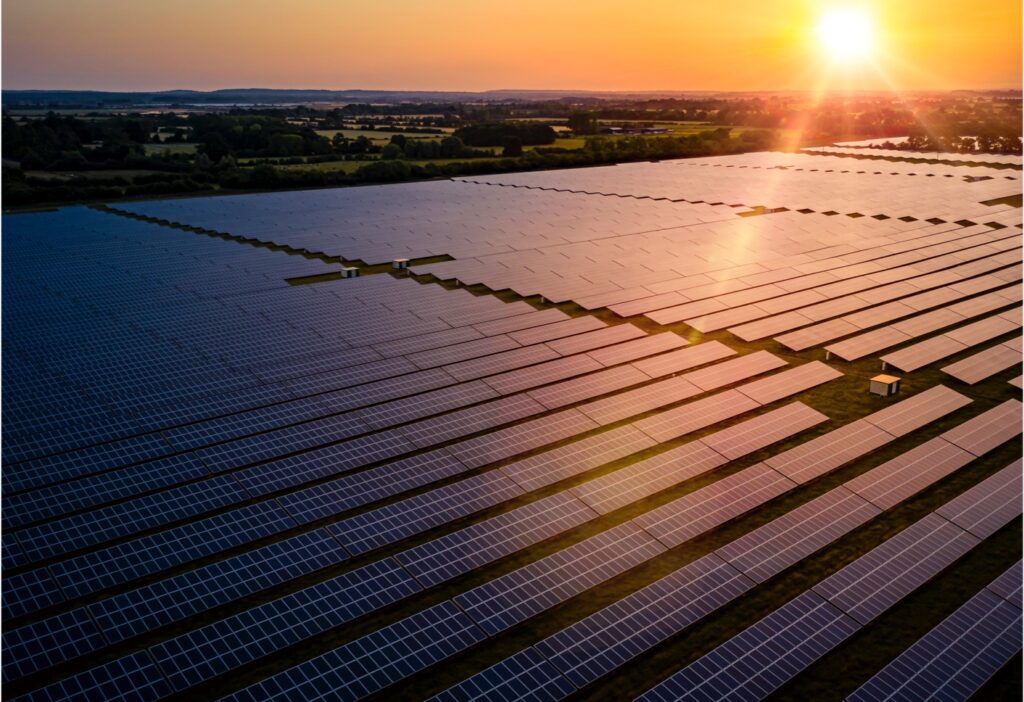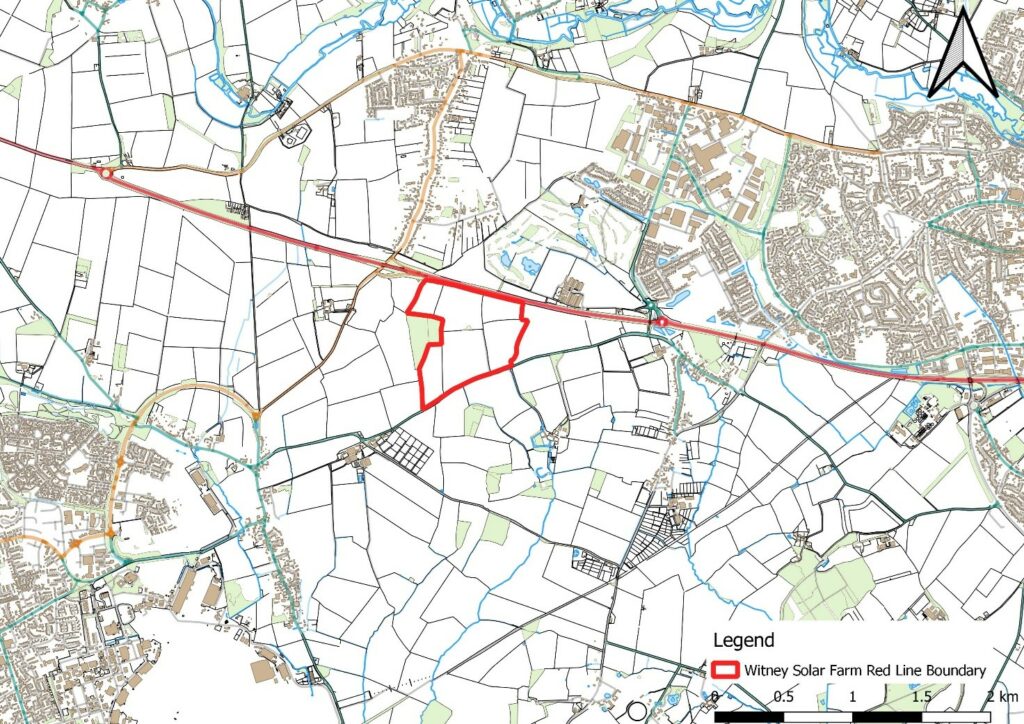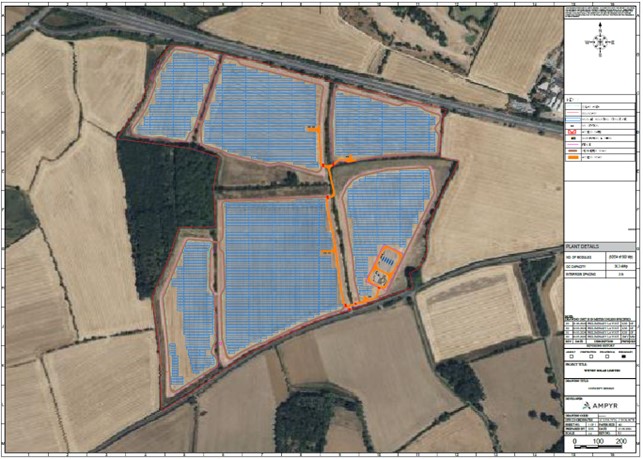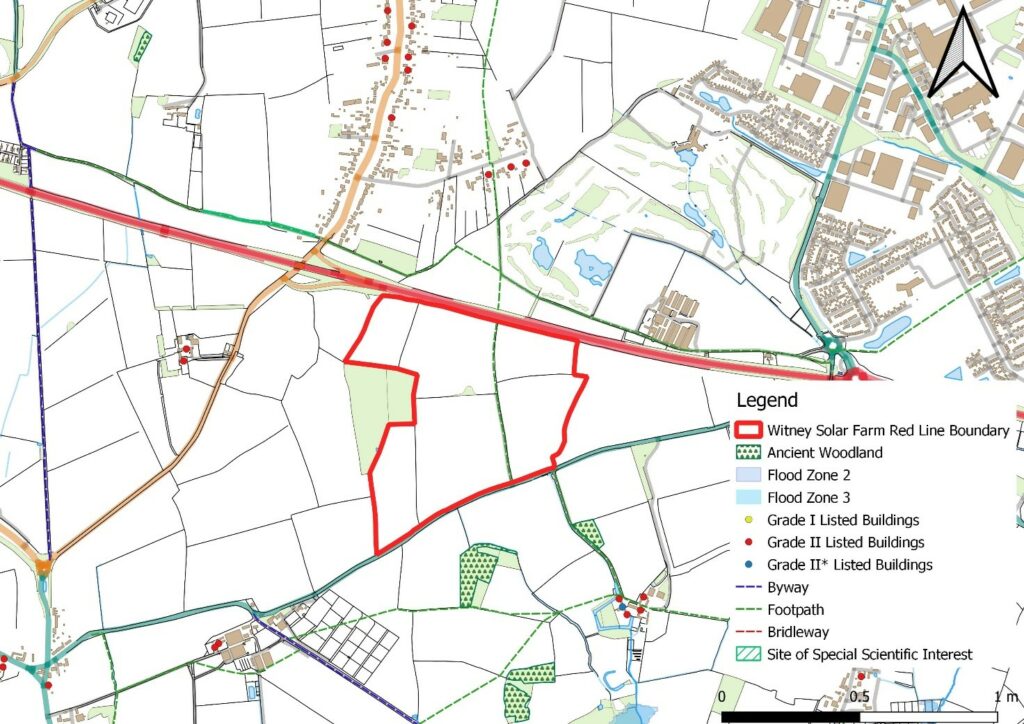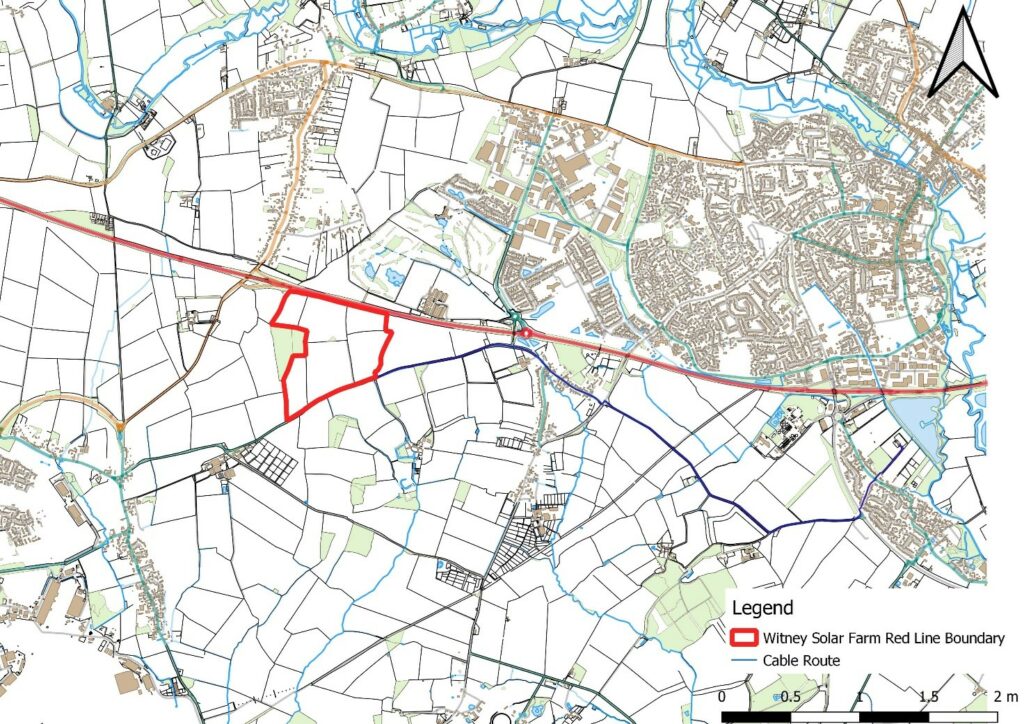How does the solar farm work?
Solar panels are made of photovoltaic cells (which is why generating electricity with solar panels is also called solar PV) that convert the sun’s energy into electricity.
Photovoltaic cells are sandwiched between layers of semi-conducting materials such as silicone. Each layer has different electronic properties that energise when hit by photons from sunlight, creating an electric field. This is known as the photoelectric effect, and this creates the electrical current.
Solar panels generate a Direct Current (DC) of electricity. This is then passed through an inverter to convert it into an Alternating Current (AC), which can then be fed into the National Grid.
The site will also have a Battery Energy Storage System (BESS). A BESS enables solar energy to be stored and then released into the grid when the power is needed most. The inclusion of the BESS at Witney Solar Farm therefore allows the solar farm to store power when the electricity demand is low and then release the power when it is in peak demand, regardless of the weather or time of day.
